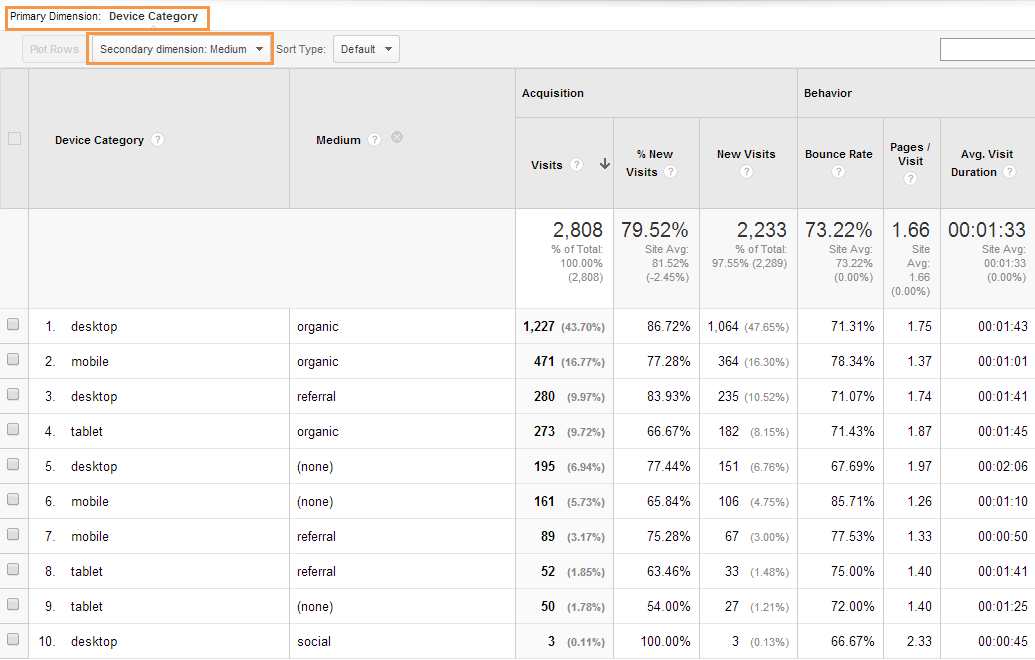Opening the Power of Secondary Measurement Analytics for Enhanced Information Insights and Decision-Making
In the world of information analytics, primary measurements often take the limelight, however the true depth of understandings exists within the world of additional measurements. By taking advantage of the power of additional dimension analytics, organizations can reveal concealed trends, reveal connections, and essence much more meaningful verdicts from their data.
Relevance of Second Dimensions
Checking out the value of secondary dimensions in analytics reveals the surprise layers of data understandings vital for informed decision-making in numerous domain names. Secondary measurements supply a much deeper understanding of main data by offering additional context and point of views. By integrating additional measurements into analytics, companies can remove a lot more thorough and nuanced understandings from their datasets.
One key significance of secondary dimensions is their capacity to segment and categorize main information, enabling a more in-depth analysis of specific parts within a dataset. This segmentation makes it possible for organizations to recognize patterns, fads, and outliers that may not appear when looking at the information all at once. Second dimensions assist in discovering relationships and reliances between different variables, leading to more exact projecting and anticipating modeling - secondary dimension.
Moreover, secondary measurements play a vital function in improving data visualization and reporting. By including second measurements to visualizations, such as charts or graphes, analysts can develop much more informative and insightful representations of information, helping with far better communication of findings to stakeholders. Overall, the assimilation of secondary measurements in analytics contributes in unlocking the complete capacity of data and driving evidence-based decision-making.
Trick Benefits of Using Additional Measurements
Utilizing additional dimensions in analytics supplies companies a tactical benefit by augmenting the deepness and granularity of data understandings. By studying information making use of second dimensions such as time, location, gadget kind, or customer demographics, companies can uncover patterns, fads, and relationships that may or else remain surprise.
Additionally, the usage of secondary dimensions boosts the context in which primary data is analyzed. By leveraging additional measurements in analytics, organizations can harness the complete potential of their data to drive better decision-making and accomplish their business goals.
Advanced Data Analysis Methods
A deep study advanced data evaluation techniques reveals advanced techniques for drawing out useful insights from complex datasets. One such strategy is artificial intelligence, where formulas are employed to identify patterns within information, predict results, and make data-driven choices. This approach enables the automation of logical model structure, making it possible for the handling of large quantities of information at a faster speed than conventional methods.
An additional sophisticated method is predictive analytics, which makes use of statistical formulas and artificial intelligence techniques to anticipate future outcomes based on historic information. By evaluating patterns and fads, services can prepare for client habits, market patterns, and potential threats, equipping them to make positive recommended you read decisions.
Furthermore, text mining and view evaluation are valuable strategies for removing understandings from disorganized data resources such as social networks comments, customer reviews, and survey feedbacks. By evaluating message data, organizations can recognize consumer opinions, recognize emerging trends, and get redirected here boost their services or items based on responses.
Enhancing Decision-Making With Second Measurements

Enhancing decision-making with secondary dimensions makes it possible for organizations to make even more educated and targeted strategic selections. For instance, by segmenting client data based upon second dimensions like acquiring background or engagement levels, firms can customize their advertising techniques to particular audience sectors, resulting in enhanced conversion prices and consumer satisfaction. Additionally, second measurements can aid determine correlations and partnerships between different variables, enabling organizations to make data-driven choices that drive growth and earnings.
Applying Additional Dimension Analytics
When including second dimensions in analytics, organizations can unlock deeper understandings Recommended Site that drive tactical decision-making and improve overall performance. Applying additional dimension analytics requires a structured strategy to ensure effective application of this effective tool. The primary step is to determine the key metrics and dimensions that align with the organization's critical objectives. This requires recognizing the certain questions the company seeks to respond to and the information factors required to resolve them.

Furthermore, companies should utilize progressed analytics devices and modern technologies to streamline the process of including additional dimensions. These devices can automate information processing, evaluation, and visualization, allowing companies to focus on translating understandings as opposed to hand-operated data manipulation.
Final Thought
Finally, secondary dimension analytics play an important function in enhancing information insights and decision-making procedures. By making use of innovative data evaluation methods and applying secondary dimensions properly, organizations can unlock the power of their information to drive critical organization choices. The essential benefits of making use of second dimensions can not be overstated, as they give a deeper understanding of data trends and partnerships. It is necessary for organizations to leverage additional dimension analytics to remain affordable in today's data-driven landscape.
In the realm of information analytics, key dimensions typically take the limelight, yet the true deepness of understandings exists within the world of second dimensions.Utilizing additional dimensions in analytics offers organizations a strategic benefit by increasing the depth and granularity of information insights. By leveraging second dimensions in analytics, companies can harness the complete capacity of their information to drive far better decision-making and achieve their service objectives.
Executing information validation procedures and regular audits can help preserve data top quality and reliability.
By making use of innovative data analysis strategies and implementing secondary measurements efficiently, organizations can unlock the power of their data to drive critical business decisions.